PROCESSIONAL, use of Sarum, in Latin, DECORATED MANUSCRIPT ON VELLUM
PROCESSIONAL, use of Sarum, in Latin, DECORATED MANUSCRIPT ON VELLUM [England, later 15th century]127 x 93mm. 179 + 2 leaves: 1 7 (of 8 lacking i), 2 8 , 3 6 (of 8 lacking iv-v), 4-5 8 , 5 6 , 6 3 , 8-11 8 , 12 9 (of 12, ii, ix and x cancelled, text continuous), 13 6 , 14 9 (of viii + ix), 15 8 , 16 9 (of 8 + ix), 17 8 , 18 2 , 19-21 8 , 22 6 , 23-24 8 , 25 4 , a loose bifolium apparently from another manuscript, traces of catchwords in lower margins of some final versos, six lines written in black ink in a gothic bookhand between two verticals and 12 horizontals ruled in ink and below six four-line staves ruled in red with neumes of a square notation, justification: 95 x 65 mm, prickings for horizontals, rubrics in red with one-line initials in blue, large initials flourished with ink, some with blue staves flourished in red (lacking first leaf and two leaves between ff.18 and 19, wear to margins, cropped into marginal annotation f.112). 19th-century brown leather (lacking clasp, lower joint split, worn). PROVENANCE: The processional, for the English use of Sarum, was made for a cleric serving a church dedicated to St Andrew, f.138. It can be dated to the later 15th century by the inclusion of the 'new feasts': the Name of Jesus, which, despite being celebrated in England since the 14th century, was still not a routine component of liturgical books at the end of the 15th century; the Transfiguration, which only became standard in England c.1500; the Visitation, written by a contemporary hand but out of sequence at the end of the manuscript, which was only generally adopted after 1475 (see R.W Pfaff, New Liturgical Feasts in Later Medieval England , 1970, also N.R. Ker, Medieval Manuscripts in British Libraries, I , 1969, p.331). Additions show that it continued in use until the Reformation; the chants for St Thomas of Canterbury, ff.13-14, have been lightly scored through in accordance with Henry VIII's prohibition of his cult in 1538. David Debushy is written in an 18th-century hand on f.1; James Sharp Esquire appears upside down on f.129v. The Property of a Religious Institution. CONTENT: Processional for the Use of Sarum: asperges lacking opening, beginning in the chant used from Easter to Whitsun '...leluya. Et omnes ad quos pervenit...', f.1; Temporal ff.1v-112v; dedication of a church ff.112v-115v; antiphons of the Virgin ff.115v-128v; Easter prayers added in a 16th-century hand ff.128v-129; Communal ff.130-137v; Sanctoral ff.138-175; asperges, added in a contemporary hand, ff.175r and v; Visitation, added in a contemporary hand, ff.176-177v; ruled blanks with later solfege musical annotations, ff.178-179; part of the communal office for a virgin on loose bifolium. Since processionals contain the texts and music needed for processions, they were often small volumes, conveniently portable by each participant. The comparatively modest decoration of the present lot means that it may have been written by a cleric for his personal use. The addition of the chant for asperging the altar might suggest that the first leaf, which probably contained this text, had been lost very early. Other texts were added as they were needed so that this book embodies liturgical practice in the final decades before the Henrician Reformation.
PROCESSIONAL, use of Sarum, in Latin, DECORATED MANUSCRIPT ON VELLUM
PROCESSIONAL, use of Sarum, in Latin, DECORATED MANUSCRIPT ON VELLUM [England, later 15th century]127 x 93mm. 179 + 2 leaves: 1 7 (of 8 lacking i), 2 8 , 3 6 (of 8 lacking iv-v), 4-5 8 , 5 6 , 6 3 , 8-11 8 , 12 9 (of 12, ii, ix and x cancelled, text continuous), 13 6 , 14 9 (of viii + ix), 15 8 , 16 9 (of 8 + ix), 17 8 , 18 2 , 19-21 8 , 22 6 , 23-24 8 , 25 4 , a loose bifolium apparently from another manuscript, traces of catchwords in lower margins of some final versos, six lines written in black ink in a gothic bookhand between two verticals and 12 horizontals ruled in ink and below six four-line staves ruled in red with neumes of a square notation, justification: 95 x 65 mm, prickings for horizontals, rubrics in red with one-line initials in blue, large initials flourished with ink, some with blue staves flourished in red (lacking first leaf and two leaves between ff.18 and 19, wear to margins, cropped into marginal annotation f.112). 19th-century brown leather (lacking clasp, lower joint split, worn). PROVENANCE: The processional, for the English use of Sarum, was made for a cleric serving a church dedicated to St Andrew, f.138. It can be dated to the later 15th century by the inclusion of the 'new feasts': the Name of Jesus, which, despite being celebrated in England since the 14th century, was still not a routine component of liturgical books at the end of the 15th century; the Transfiguration, which only became standard in England c.1500; the Visitation, written by a contemporary hand but out of sequence at the end of the manuscript, which was only generally adopted after 1475 (see R.W Pfaff, New Liturgical Feasts in Later Medieval England , 1970, also N.R. Ker, Medieval Manuscripts in British Libraries, I , 1969, p.331). Additions show that it continued in use until the Reformation; the chants for St Thomas of Canterbury, ff.13-14, have been lightly scored through in accordance with Henry VIII's prohibition of his cult in 1538. David Debushy is written in an 18th-century hand on f.1; James Sharp Esquire appears upside down on f.129v. The Property of a Religious Institution. CONTENT: Processional for the Use of Sarum: asperges lacking opening, beginning in the chant used from Easter to Whitsun '...leluya. Et omnes ad quos pervenit...', f.1; Temporal ff.1v-112v; dedication of a church ff.112v-115v; antiphons of the Virgin ff.115v-128v; Easter prayers added in a 16th-century hand ff.128v-129; Communal ff.130-137v; Sanctoral ff.138-175; asperges, added in a contemporary hand, ff.175r and v; Visitation, added in a contemporary hand, ff.176-177v; ruled blanks with later solfege musical annotations, ff.178-179; part of the communal office for a virgin on loose bifolium. Since processionals contain the texts and music needed for processions, they were often small volumes, conveniently portable by each participant. The comparatively modest decoration of the present lot means that it may have been written by a cleric for his personal use. The addition of the chant for asperging the altar might suggest that the first leaf, which probably contained this text, had been lost very early. Other texts were added as they were needed so that this book embodies liturgical practice in the final decades before the Henrician Reformation.
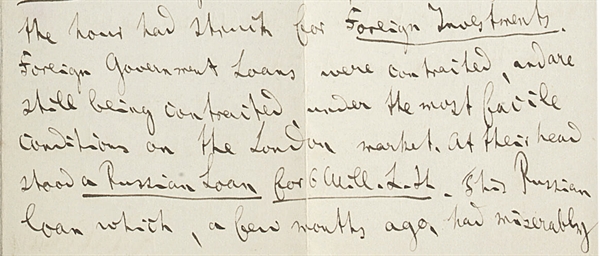

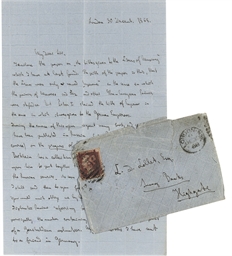



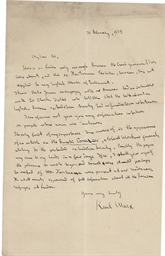
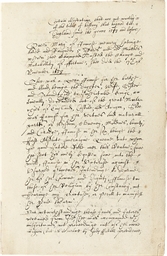






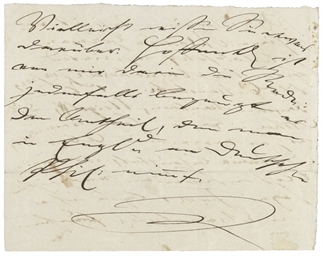
Try LotSearch and its premium features for 7 days - without any costs!
Be notified automatically about new items in upcoming auctions.
Create an alert